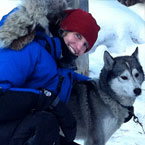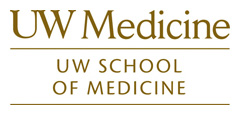Training More Primary Care Doctors for Kids in the Region
The Alaska track was the brainchild of Dr. F. Bruder Stapleton, former chair of pediatrics, as one way to address a shortage of primary care pediatricians in parts of our region.
“There’s a strong correlation between where doctors train and where they go into practice,” says Stapleton. “States with the most training programs have the highest pediatrician-to-child ratios.”
The UW–Seattle Children’s residency program is the only pediatric training program in the five-state region known as WWAMI (Washington, Wyoming, Alaska, Montana and Idaho), and even though about half its graduates pursue careers in primary care, that’s not enough to meet the needs of kids and families in the region.
Montana, Wyoming, Idaho and Alaska have some of the lowest pediatrician-to-child ratios in the nation.
Stapleton reasoned that the new track could improve the educational experience for residents committed to a career in primary care. Moving them to Alaska for a significant chunk of their training would give them on-the-ground experience in rural and underserved areas and, hopefully, boost the chances of keeping them in the region when they finish their training.
A New Primary Care Pediatrician for Alaska

Dr. Theresa Dulski is one of many former residents who moved back to Alaska to practice when she finished residency.
When she graduated from Atlanta’s Emory University School of Medicine in 2012, Dr. Theresa Dulski had three things on her wish list: to be a pediatrician, to train in a top children’s specialty hospital and to someday be a primary care doctor.
Dulski set her sights on the road less traveled: Alaska, a state with 183,000 people under age 18 spread across more than 570,000 square miles – and fewer than 60 pediatricians to care for them all.
When she matched in the University of Washington–Seattle Children’s residency program’s Alaska Track, it was in its first year.
Dulski chose the Alaska Track because it met her criteria: she could train with specialists in a top children’s hospital and also learn to practice primary care in a place where resources are limited and specialists are few and far between. It also appealed to her spirit of adventure, and she looked forward to spending time outdoors in spectacular settings.
She was prepared to be interested in Alaska, and expected to grow there by leaps and bounds. What she didn’t expect was that she would fall in love with the place and its people.
“After my first rotation in Alaska I thought, ‘I really like this,’” says Dulski. “The second year I thought, ‘I could see myself working here.’ And [my third] year I knew I wasn’t ready for my Alaska experience to be over.”
Before she left Alaska during her final rotation, Dulski was offered – and accepted – a position at Southcentral Foundation in Anchorage, one of the sites where she trained.
“If I hadn’t trained in Alaska, I would have been far less likely to end up practicing there,” she says.
Dulski may be have been the first Alaska Track resident to accept a job in WWAMI, but she certainly was not the last, as many former Alaska Track residents now work in Alaska and the WWAMI region – exactly the outcome Stapleton and his team hoped for when he started dreaming up the Alaska Track.
WWAMI vs. WAMI
WWAMI
The five-state region for which the University of Washington School of Medicine offers the only pediatric residency program:
- Washington
- Wyoming
- Alaska
- Montana
- Idaho
WAMI
The four-state region Seattle Children’s serves as pediatric specialty hospital:
- Washington
- Alaska
- Montana
- Idaho
